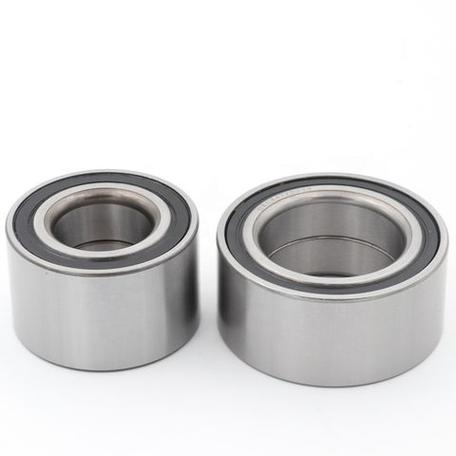High Temperature Bearings: Essential Guide to Materials, Applications, and Maintenance
High temperature bearings are specialized components designed to operate reliably in extreme heat environments, typically exceeding 300°F (150°C). These bearings are critical for industries like aerospace, metallurgy, and energy production, where standard bearings would fail due to thermal expansion or lubricant breakdown.
Table of Contents
1. High Temperature Bearing Materials2. High Temperature Bearing Applications
3. High Temperature Bearing Lubrication
4. High Temperature Bearing Maintenance
5. High Temperature Bearing Manufacturers
1. High Temperature Bearing Materials

High temperature bearings require materials that maintain structural integrity under thermal stress. Common options include silicon nitride ceramics (operating up to 1,400°F), tool steel with special heat treatments, and cobalt-based alloys. Ceramic hybrid bearings combine steel races with ceramic balls, reducing thermal expansion mismatch. Material selection depends on temperature range, load capacity, and corrosion resistance requirements. Recent advancements include self-lubricating composites with embedded solid lubricants that function at 900°F .
2. High Temperature Bearing Applications
These bearings are essential in furnace conveyor systems, turbochargers, and kiln applications. Aerospace uses include jet engine components exposed to 500°F-1,200°F. Food processing equipment employs them in ovens and sterilizers. Proper bearing selection reduces downtime in steel mills where rollers operate near 1,000°F. Emerging applications include concentrated solar power systems and nuclear reactor coolant pumps.
3. High Temperature Bearing Lubrication
Specialized lubricants must withstand oxidation and thermal degradation. Synthetic PAO oils function up to 350°F, while PFPE-based lubricants work at 500°F . Solid lubricants like molybdenum disulfide or graphite coatings operate at 750°F . Recent developments include ionic liquid lubricants stable beyond 900°F. Proper lubrication intervals prevent premature failure - automated greasing systems can maintain optimal levels in inaccessible installations.
4. High Temperature Bearing Maintenance
Implement thermal monitoring with infrared sensors to detect abnormal heat patterns. Use ultrasonic testing to identify lubrication deficiencies. Clean bearings with high-flash-point solvents during servicing. Establish replacement schedules based on thermal cycling history - bearings in intermittent service typically last longer than those in constant high-heat operation. Always follow manufacturer guidelines for relubrication quantities to prevent overfilling.
5. High Temperature Bearing Manufacturers
Leading manufacturers include SKF (Solar series), NTN (HTF series), and Timken (UltraHighTemp line). Evaluate suppliers based on third-party certifications like ISO 281:2007. Custom manufacturers like Boca Bearing offer material hybrids for specific applications. Always verify maximum continuous operating temperatures and dynamic load ratings. Emerging manufacturers in India and China now offer cost-effective alternatives with proper quality certifications.
Understanding high temperature bearing technology can significantly impact operational efficiency. Whether you're battling thermal expansion in steel mills or seeking reliable components for aerospace applications, this guide covers critical aspects from material science to maintenance protocols. The following sections delve deeper into selection criteria, installation best practices, and cost optimization strategies for extreme environment bearings.
High temperature bearings require careful consideration of material properties, lubrication systems, and operational parameters. By selecting appropriate components and implementing proactive maintenance, industries can achieve longer service life and reduced downtime in extreme thermal conditions. Always consult with certified engineers when designing or retrofitting high-temperature bearing systems.




 13869596835
13869596835